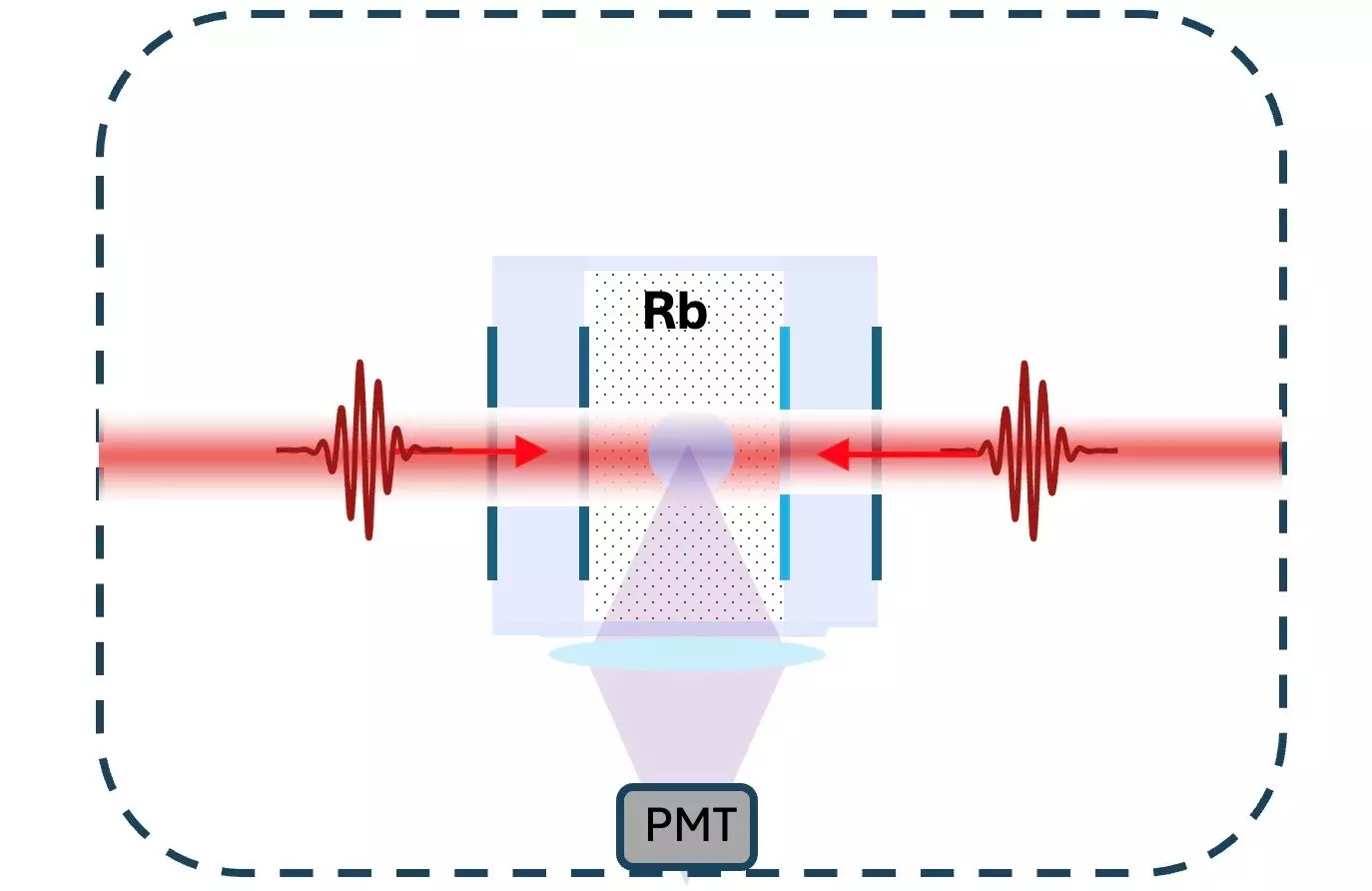In an exciting development within the field of timekeeping, researchers have achieved a significant breakthrough with the creation of an innovative optical atomic clock that leverages a single laser and operates without the need for extreme cryogenic temperatures. This advancement simplifies atomic clock designs while maintaining, if not enhancing, their accuracy and stability. The implications of this technology could extend its application beyond laboratory walls into everyday scenarios, promising a compact and portable timekeeping solution.
Over the past twenty years, research has dramatically advanced atomic clock technology, pushing the boundaries of precision timekeeping. However, many of these sophisticated designs remain impractical for real-world applications. Jason Jones, the leading researcher from the University of Arizona, emphasizes this point: though advancements are impressive, the complexity of typical atomic clock configurations hinders their adoption in practical settings. To overcome these challenges, Jones and his team introduced a simplified construction that utilizes a single frequency comb laser to both provide the clock’s ticking mechanism and track time—a dual functionality that streamlines the operation.
At the core of this innovation is the concept of frequency combs, specialized lasers that emit an array of multiple frequencies spanning a significant range. This technology has transformed atomic clock design by enabling more efficient excitation of atomic transitions. The research team detailed their findings in a publication in the journal Optics Letters, revealing that their new optical atomic clock directly excites a two-photon transition in rubidium-87 atoms, achieving performance levels that rival those of traditional atomic clocks employing dual laser setups.
Seth Erickson, the lead author of the study, highlights the broader implications of this work. The new technology could enhance the Global Positioning System (GPS) by improving the accuracy and availability of satellite-based atomic clocks. Furthermore, it opens the door to potential applications in everyday technology, enabling faster telecommunications and improved data transmission that would allow more extensive simultaneous communications over existing channels.
The operation of an optical clock hinges on its ability to measure time with remarkable precision, relying on the transitions of atomic energy levels when stimulated by laser light. Typically, these transitions serve as the “ticks” of the clock. Traditional systems often require atoms to be cooled to near absolute zero, drastically minimizing their motion to enhance precision. By innovatively using two-photon transitions, Jones and his team have circumvented this requirement for extreme cooling. Their design allows the use of atoms at significantly higher temperatures, such as 100°C, without compromising the accuracy of the clock.
The clever approach involves sending photons from opposite directions toward the rubidium atoms, where the motion-induced effects on the light beams cancel each other out. This fundamental insight allows for a reduction in the complexities typically associated with atomic clock construction.
A notable aspect of this research is how the researchers utilized frequency combs to create a specifically tailored light source that can excite rubidium atoms without the constraints of a single-color laser. By employing fiber Bragg gratings, they effectively optimized the frequency comb to narrow its range to less than 100 GHz, honing in on the desired atomic transition. This adaptation not only enhanced the compatibility between the frequency comb and the rubidium atoms but also simplified the overall clock structure.
Testing demonstrated that the new atomic clock consistently performed well, showcasing instabilities comparable to traditional atomic clocks. This level of performance paves the way for further developments, with researchers now intent on refining the optical clock’s design, aspiring to make it even smaller and more stable over extended durations.
As advancements in laser technology progress, the potential avenues for the direct frequency comb method are expansive. Beyond rubidium-87, this technique could feasibly be applied to other atomic transitions that necessitate multi-photon absorption, broadening the scope of atomic clock applications.
The evolution of optical atomic clocks represents a promising frontier in precision timekeeping. With the capability of being compact, portable, and more accessible, this new technology not only enhances existing systems like GPS but also holds transformative potential for everyday applications. The future of this research hints at a plethora of innovations aimed at creating highly accurate clocks that could seamlessly integrate into various facets of modern technology, laying the groundwork for unparalleled advancements in both scientific and practical settings.


Leave a Reply